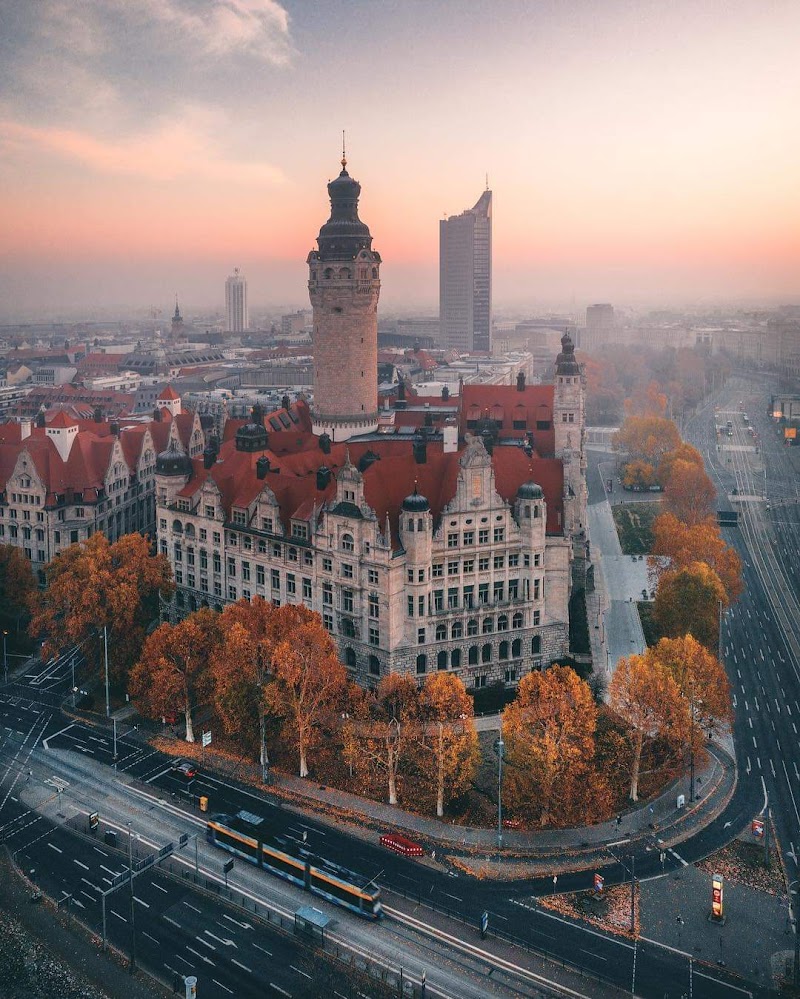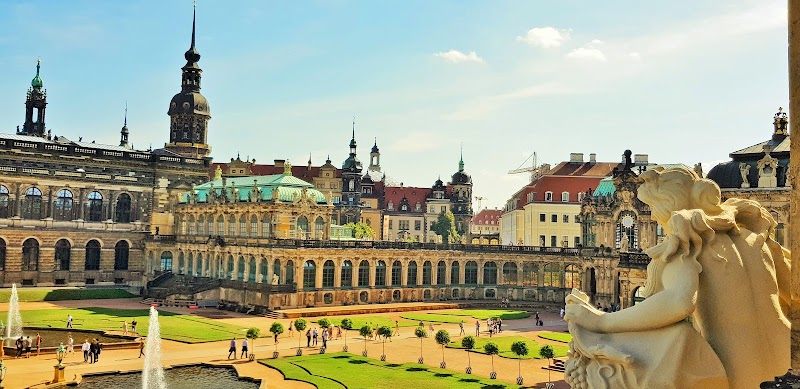Did you know that Saxony, Germany's tenth largest state, is home to more than 500 castles, fortresses, and palaces? This cultural gem is an enchanting confluence of art, history, and breathtaking landscapes. From the Baroque splendor of Dresden's Zwinger Palace to the stunning rock formations in the Saxon Switzerland National Park, Saxony promises a journey filled with awe-inspiring sights.
As you embark on your adventure, you'll find the Saxony tourist map to be an invaluable companion. With this handy tool, you can chart your own course through Saxony's rich tapestry of attractions. It's not just about knowing where to go—it's about creating a journey that's uniquely yours. So, let the map guide your curiosity and open doors to unforgettable experiences.
" Booking.comUnveiling the Hidden Gems of Saxony
While Saxony is renowned for its iconic castles, palaces, and historic sites, its true charm lies in its lesser-known attractions and experiences. From awe-inspiring architecture to tranquil natural wonders, let's take a journey off the beaten path to discover Saxony's best-kept secrets!
The Enchanting Moritzburg Castle
Nestled amidst a serene landscape of ponds and forests, the Moritzburg Castle is a baroque masterpiece that encapsulates the grandeur and elegance of Saxony's royal past. Remarkably, this castle was once a hunting lodge for Augustus the Strong, the Elector of Saxony. Its proximity to Dresden makes it a perfect day trip destination for those seeking a respite from the bustling city life.
The Majestic Bastei Bridge
Few landscapes in Saxony can rival the sheer spectacle of the Bastei Bridge. Perched high above the Elbe River, this sandstone bridge offers breathtaking panoramic views of the Saxon Switzerland National Park. The bridge itself is a testament to the intricate craftsmanship of the 19th century, making it not only a scenic spot but also a fascinating historic site.
The Vibrant Leipzig
As the largest city in Saxony, Leipzig holds a unique blend of historic charm and modern vibrancy. Its cultural scene is brimming with impressive museums, art galleries, and music venues, reflecting the city's rich history as a hub of creativity and innovation. After exploring its historic sites, you can unwind at the Leipzig Zoo, one of the oldest zoos in the world, which houses more than 850 animal species.
The Tranquil Meissen Porcelain Manufactory
For a change of pace, venture to the town of Meissen, home to the oldest porcelain manufactory in Europe. This manufactory gives you a glimpse into the intricate process of porcelain making, a craft that has been perfected over centuries. The finished products, with their delicate designs and flawless finish, are a testament to Saxony's tradition of excellence in craftsmanship.
The Unforgettable Saxon Wine Route
No visit to Saxony would be complete without exploring its renowned wine route. This scenic route takes you through picturesque vineyards and quaint wine villages, offering an unmissable opportunity to sample Saxony's finest wines. As you journey along the route, don't miss the chance to visit the historic town of Radebeul, known for its charming vineyards and historic wineries.
Each of these unique experiences adds a different facet to your Saxony adventure, providing a deeper understanding of the region's rich history, culture, and natural beauty. To plan your journey and ensure you don't miss these hidden gems, be sure to refer to the tourist map of Germany.
Experience the Magic of Saxony
From its majestic castles to its vibrant cities and tranquil natural landscapes, Saxony is a destination that promises an unforgettable journey filled with discovery and wonder. Whether you're a history enthusiast, a nature lover, a wine connoisseur, or a culture vulture, Saxony has something for everyone. So why wait? Start planning your Saxony adventure today and get ready to uncover the hidden charms of this enchanting region.

Practical Information for Exploring Saxony
Transportation and Mobility
Getting around Saxony is a breeze thanks to its excellent public transportation system, which includes buses, trams, and trains. For intercity travel, consider using the Saxony Regional Transport Network (VVO), which offers comprehensive service to all major cities and towns in the region. Alternatively, renting a car offers the convenience and flexibility to explore Saxony at your own pace.
If you're planning to use public transportation extensively during your stay, consider purchasing a Saxony Transport Ticket (Sachsen-Ticket), which grants unlimited travel on regional trains, trams, and buses for a day. The ticket costs around €24 for one person, plus €5 for each additional person (up to 4).
Schedules and Prices
Saxony's attractions generally operate on a consistent schedule, with most opening around 10 AM and closing between 5 and 6 PM. Remember that many museums and attractions are closed on Mondays. Always check the official websites of the places you plan to visit for the most accurate and up-to-date information.
Entry fees for attractions vary, but you can expect to pay between €10 and €15 for major museums and historical sites. Many places offer reduced fees for students, seniors, and families, so don't forget to bring identification to take advantage of these discounts.
Safety Tips
Saxony is generally a safe region to visit, but as with any travel destination, it's important to stay alert and aware of your surroundings. Avoid isolated areas after dark and keep your valuables secure and out of sight. In case of emergencies, dial 112 for immediate assistance.
Practical Recommendations
When packing for your Saxony adventure, remember that the region's weather can be quite changeable, especially in the Saxon Switzerland National Park, so bring layers and waterproof clothing.
The best times to visit Saxony are late spring (May to June) and early autumn (September to October), when the weather is typically mild and the landscapes are at their most picturesque. However, if you're a fan of Christmas markets, December offers a magical experience, despite the colder weather.
Lastly, while English is commonly spoken in tourist areas, learning a few basic German phrases will enrich your interactions with locals and deepen your overall travel experience.

Frequently Asked Questions
1. Can I experience traditional Saxon cuisine during my visit to Saxony, and where should I go for this?
Yes, indeed! Saxony offers a rich gastronomic heritage that will tantalize any food enthusiast's taste buds. You can find traditional Saxon dishes like Sauerbraten (a pot roast, usually of beef, marinated before being slow-cooked), Quarkkäulchen (a dessert made with quark, potatoes, and flour), and Eierschecke (a regional cake) in local eateries and restaurants. Some of the best places to try these are in the old towns of Dresden and Leipzig, where you'll find plenty of traditional Saxon restaurants nestled among the historic architecture.
2. Are there any special events or festivals in Saxony that I should plan my trip around?
Saxony hosts several exciting festivals and events throughout the year which are worth aligning your visit with. The Dresden Music Festival in May and June celebrates diverse music genres. Leipzig's Bachfest in June is a tribute to the city's most famous composer, Johann Sebastian Bach. For wine lovers, the Saxon Wine Festival in September is a must-visit. These events not only provide entertainment but also offer deep insights into the region's culture and traditions.
3. I'm an art enthusiast. Can I find unique Saxon art in Saxony?
Art lovers are in for a treat in Saxony. The region is known for its distinct folk art traditions, particularly in the Erzgebirge (Ore Mountains) region. Here, you can find unique wood carvings, Christmas pyramids, nutcrackers, and Schwibbogen (candle arches) — all traditional forms of Saxon folk art. Visit local workshops or markets in towns like Seiffen to purchase these as souvenirs.
4. How friendly is Saxony for cyclists? Are there any recommended routes?
Saxony is a haven for cyclists, with an extensive network of well-maintained cycling paths. One recommended route is the Elbe Cycle Route, which winds along the river Elbe through charming towns, vineyards, and landscapes. Another popular choice is the Saxon Wine Route Cycle Path, offering stunning views and the opportunity to sample local wines along the way.
5. Are there any opportunities for water sports in Saxony?
Yes, Saxony offers a variety of water sports activities. The Lake District of Lausitz is a prime location for water sports, offering everything from sailing and windsurfing to paddleboarding and fishing. The large, clean lakes and modern facilities make it a top choice for water enthusiasts.
6. How prevalent is English spoken in Saxony? Do I need to know German to communicate effectively?
While many Saxons do speak English, especially the younger generation and those working in tourism, it's not uncommon to encounter situations where English isn't well-understood. Learning a few basic German phrases can make your travel experience smoother and more enjoyable. It's also a sign of respect for the local culture.


